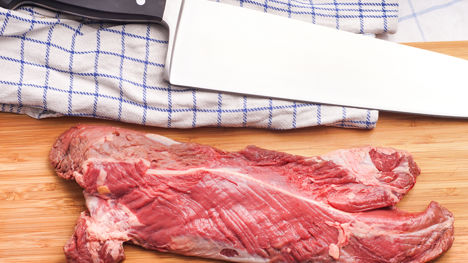Onglet is a cut of beef that hangs beneath the diaphragm of the animal near the flank (which is why it’s sometimes called hanger steak in other countries). The steak has quite a coarse grain but due to its positioning on the animal does relatively little work and is therefore quite tender. It is best cooked quickly over a very high heat to either rare or medium rare, making it a favourite for steak frites in French bistros. Onglet has a unique meaty flavour similar to offal, thanks to its close proximity to the liver of the animal. It is basically two muscles attached together by a thick piece of connective tissue.
If you find yourself presented with a whole onglet, preparing it may seem a little daunting. It takes a little nifty knife-work to remove the connective tissue, but here chef Andy McLeish shows us how to negotiate this cut with ease to leave you with lovely, tender cuts of meat that are perfect for all manner of beautiful beefy dishes.
Method
Serving suggestions
Onglet has a wide variety of uses, from quickly-grilled steak dinners to slow-cooked stews. If you are using a quick-cook method such as grilling or pan-frying, aim for a medium-rare finish – any longer and the meat might be a bit tough. If you prefer your beef well-done, use onglet in a stewing or braising dish for a fantastically unctuous finish.
Andy's grilled onglet recipe not only shows you how to grill beef onglet to perfection, but also whips up a deliciously rich red wine sauce using all of those delicious fatty trimmings. Jeremy Lee serves up his onglet steak recipe with pickled walnut and horseradish, while Tom Hunt's barbecued onglet recipe is served with a light herb dressing.
Get in touch
Please sign in or register to send a comment to Great British Chefs.



